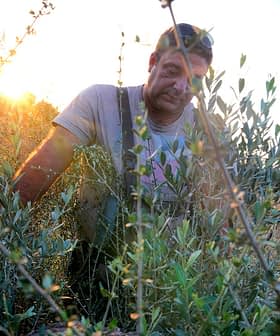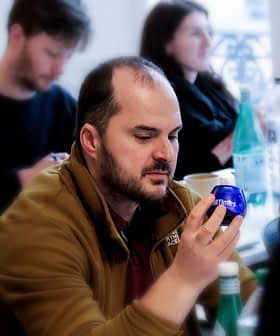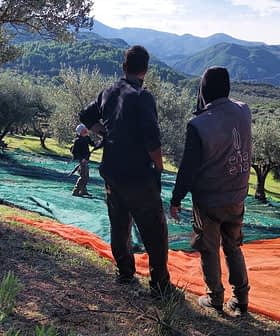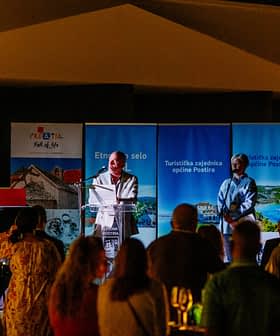Promising Signs of a Robust Harvest in Greece
Contrary to other main European producers, Greece expects a substantial increase in its harvest yield. However, significant challenges could hamper the final tally.
 Crete, Greece
Crete, Greece Greece is expected to see a significant increase in olive oil production in the 2022/23 crop year, with estimates suggesting the country may produce near or exceed 300,000 tons, bouncing back from a lower production year. Various regions in Greece, such as Messenia and Laconia, are anticipating double-figure production increases, although concerns about the olive fruit fly populations in some areas persist, impacting costs and labor availability for local producers.
After a moderate yield of 227,000 tons of olive oil last year, a significant increase in olive oil production is expected in Greece in the 2022/23 crop year.
According to some estimates, the amount of olive oil produced nationally will likely be near or even exceed 300,000 tons, five years after the 2017/18 harvest season when the country yielded 346,000 tons.
This season’s yield will be a record-setting one, especially along the coastal zone (of Crete). However, the lack of field laborers is a huge problem.
Greece experienced a mild summer, unlike the exceptionally hot and dry weather conditions that prevailed in much of western and southern Europe, causing harvest estimates in major producing countries such as Spain and Italy to be revised downward.
Several olive oil-producing regions of Greece, including Ilia in the Peloponnese, Aetolia-Acarnania in the western mainland and Magnesia in central Greece, are expected to rebound from last year’s low to average production and head toward robust harvest.
See Also:2022 Harvest UpdatesHowever, the manifestation of olive fruit fly populations in some producing areas, mainly in the Peloponnese and Crete, the two hubs of the Greek olive oil industry, is a cause of concern for local growers and producers.
In southern Peloponnese, the regions of Messenia and Laconia are both set for double-figure production increases, according to the local departments of agriculture.
The provisional output estimates from the departments place Messenia’s olive oil yield close to 40,000 tons (up by 20 percent) while neighboring Laconia expects around 30,000 tons (an increase of 50 percent).
Local producers also anticipate a bumper olive oil crop, far better than the previous mediocre harvest.
“We expect our area to yield around 4,500 tons this year, which translates to 90 percent of the area’s production capacity,” Panayiotis Batzakis, the head of the Agioi Apostoloi agricultural association in Laconia, told Olive Oil Times. “Last year, we only managed to reach half of our production capacity.”
“We have zero problems with the fruit fly so far, and the ample rains in winter were beneficial for the olive trees,” Batzakis continued. “We mostly cultivate trees of the Athinolia variety, which gives some very aromatic olive oils.”
Batzakis added that a significant challenge for local producers is the scarcity of laborers and the high cost of hiring workers who are still available.
“Most foreign workers have left for Italy,” he said. “In advance, wages have risen and producers must pay all taxes for each worker they employ. Considering all the other expenses, harvest costs have skyrocketed. The state must intervene to provide a solution.”
Batzakis also noted that producers’ prices currently remain at satisfactory levels, with a kilogram of fresh extra virgin olive oil selling for €4.80 to €4.90 in the area.
Other producers from the two regions told Olive Oil Times that the fruition of the olive trees is satisfying.
However, they added that the olive fruit fly, a significant pest, has made its presence felt in some areas, aided by the lack of significant summer heatwaves (with temperatures above 35 °C), which would prevent the insect from breeding.
On Crete, olive growers and producers are banking on a record olive oil harvest of more than 100,000 tons, although anxiety exists regarding the impact of the fruit fly on production.
“This season’s yield will be a record-setting one, especially along the coastal zone,” said Yiorgos Motakis, a producer and the head of the Palea Roumata agricultural association near Chania. “Some producers have already started harvesting their olives. However, the lack of field laborers is a huge problem.”
Motakis added that fruit fly populations in increased numbers had been recorded in the area, criticizing the actions to contain the pest as ineffective.
“The insects are thriving,” he said. “The crop-dusting operations were done using only one type of pesticide, which is unacceptable. Pesticides should be alternated, and operations should have been completed sooner. The problem will be evident during harvest.”
The island of Lesbos in the eastern Aegean Sea, a traditional olive oil-producing territory of Greece, is also expected to fare significantly better this year than previous crop years, with a production of around 15,000 tons of olive oil.
In northern Greece, producers in Chalkidiki are optimistic about a strong olive oil yield this season.
“It looks like a good year,” said Yiorgos Rountos, a producer and miller based on the peninsula. “There are no problems with the fruit fly so far since there were no rains, only some squalls occurred in late August, so we expect [olive oil] of really high quality.”
In the northeastern district of Alexandroupolis, the olive trees’ unobstructed spring flowering has led to branches overloaded with olive drupes.
However, in the nearby area of Makri, the olive moth has already taken its toll on the area’s olive trees.
“The olive moth has caused an extended olive fruit drop in our area,” Valia Kelidou of Kyklopas, a producing company based in Makri and a repeated winner at the NYIOOC World Olive Oil Competition, told Olive Oil Times. “The fruit fly is nowhere to be seen for the time being.”
Kelidou added that Makri would fare better than in previous years in terms of olive oil quantity. However, she identified rising producer costs as a serious hindrance to a rewarding harvest.
“Despite expecting a strong yield, producers cannot be satisfied due to the increased costs,” she said. “The prices of energy, fuel, fertilizer and equipment are rising dramatically. Workers are also hard to come by, and their daily rates are increasing.”
“Despite the problems, our mill will start its operation early this season, and we hope it is going to be a good olive oil season both in quality and quantity,” she finally said. “After all, the area of Makri is widely recognized for the premium quality olive oil it produces.”
Share this article









